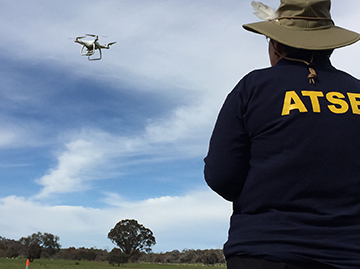The Australian Transport Safety Bureau (ATSB) will boost its investigation capability with the imminent deployment of a new remotely piloted aerial system (or drone).

The use of drones in safety investigations has the potential to significantly reduce costs and improve investigator safety.
The ATSB’s drone project manager, Aaron Holman, says the organisation has been monitoring the emerging technology since 2012.
“The technology has reached a point where we believe it can be usefully deployed to accident sites to assist our investigators and investigations,” Mr Holman said.
Benefits of the drone technology include safety, mapping and recording.
“The biggest benefit is being able to survey an accident site quickly and accurately—the entire accident site,” Mr Holman said.
“We can inspect by drone before sending our investigators in. We can ensure the site is safe.
“We’ll get still images and video which we’ll be able to integrate into our investigation reports, which will make them more interactive and more engaging. We hope to be using the drone before the end of the year.”
Drones, however, do have their limitations.
“They may be less useful in densely forested areas or confined spaces,” Mr Holman said. “They can’t really be used in rain and there are performance limits in windy conditions.”
After watching a demonstration of the drone’s photographic and mapping capabilities north of Canberra recently, ATSB Chief Commissioner Greg Hood is keen to see the technology deployed in the field.
“This will be a useful addition to our investigation armoury and a cost effective solution across aviation in particular, but also maritime and rail sectors,” Mr Hood said.
As well as lowering the risk to ATSB investigators, there is a significant cost efficiency over mobilising aircraft such as helicopters.
“Although we sometimes piggyback on police aerial resources to assist with our investigations, the cost of assessing an accident site via helicopter can be high,” Mr Homan said. “Using a drone will be cheaper, easier to use and more flexible.
“We’ll be able trace accident flight paths far more accurately and be able to identify strike marks on a tree, for example. This was problematic before this technology became available.”
After testing is completed, the ATSB is likely to deploy drones from its offices in Canberra, Brisbane, Adelaide and Perth.


